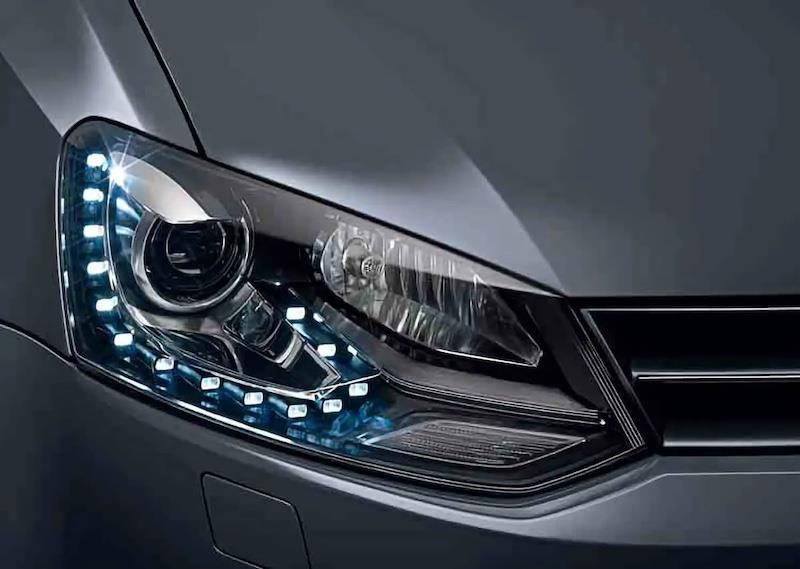
Can Adaptive Headlights Make Driving Safer? Robotics & Automation News
In February 2022, the U.S. National Highway Traffic Safety Administration (NHTSA) ruled that automobile makers could finally install adaptive driving beam headlight systems (ADB) on their new vehicles to make driving at night and in low visibility safer for motorists, bicyclists, pedestrians, domestic and wild animals, and others.
This change to the Federal Motor Vehicle Safety Standards (FMVSS) occurred after federal agencies received complaints from manufacturers and consumers about the lack of modern vehicle lighting and safety technologies to match other countries that had adopted these standards decades ago. Read on to learn more about the impact of these headlights on road safety...
Are ADB Systems Necessary?Most states have laws regarding when headlights must be used. For example, Florida law states headlights must be used from sunset to sunrise, including twilight ours and during rain, fog and smoke. Not all drivers adhere to these laws putting themselves and others at risk of dangerous accidents.
More than 40,000 people a year die in car accidents. Nighttime fatalities make up approximately 50% of all traffic accident deaths.
Drivers and others have more difficulty seeing in general at night and at dusk and dawn when dealing with sunset and sunrise glare, fog and other low visibility scenarios.
Although high beams help people see more than with human vision and low beams, another big nighttime problem is high-beam glare.
Many drivers complain that they've nearly had an accident or crashed because of temporary high-beam blindness.
Some drivers also have accidents because they refuse to use their high beams. They rely entirely on low beams that fail to provide enough illumination and visibility because they worry about blinding other drivers, bicyclists and pedestrians with what they feel are unnecessarily bright modern lights that cause direct pinpoint glare, halos and after-image visual problems.
How Do ADB Systems Help?ADB headlights solve these problems by increasing the amount of light so that people can see a lot further. They also reduce the amount of light that shines into a driver's eye in the presence of other vehicles in front of or approaching the vehicle in the opposite lane.
Some systems reduce the light automatically with sliding blinders, and others carefully turn off some LED filaments inside the headlight.
This feature is also helpful because many headlights now contain LED filaments that create blue light and cause eye sensitivity. ADB systems rapidly remove the amount of blue and overall light.
As noted in a 2022 Consumer Reports breakdown and a 2019 AAA study, ADB systems improve nighttime visibility by up to approximately 86% and offer the same level of illumination with only the glare of low beams.
Consumer Reports found through independent testing that ADB systems add up to an additional 250 feet of illumination when compared to the distance of low beams.
Are ADB Headlights Helping Today?Since the approval by the NHTSA only applies to new vehicles, many Americans continue to deal with unnecessary glare from high beams. Manufacturers have hit a wall because the new U.S. standards don't match the existing standards and technologies for other countries.
The cost to install the systems in cars in the U.S. market is prohibitive for them and consumers. The price of an ADB system can run thousands of dollars, which makes it more difficult for drivers to upgrade their own vehicles with safer lighting systems.
Some vehicles already have automatic switching from low to high beams, but those systems aren't as adaptive as ADB systems.
Additionally, vehicle mods and a trend of drivers buying more large, high body designs mean that more drivers experience bright glare from high beams focused directly into their eyes. Most states don't require that headlights focus on the road.
A lack of a requirement for inspections and overall low concern by inspectors results in one or both headlights being aligned incorrectly, which causes unnecessary glare.
Legal Disclaimer:
MENAFN provides the
information “as is” without warranty of any kind. We do not accept
any responsibility or liability for the accuracy, content, images,
videos, licenses, completeness, legality, or reliability of the information
contained in this article. If you have any complaints or copyright
issues related to this article, kindly contact the provider above.


















Comments
No comment